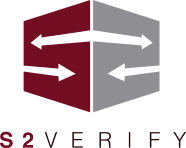Work Style Cage Match: Gen Z vs Everyone Else
In case you missed it, Gen Z is now in the workforce. They’ve already surpassed Baby Boomers in numbers, and by 2025, Gen Z will account for 27 percent of the workforce, bringing unprecedented digital literacy, more diversity, and a greater emphasis on mental health to the workplace.
As with every generational progression, Gen Z differs radically from their predecessors, the Millennials (who differ greatly from Gen X, and so on)—especially regarding work styles and preferences. And the recent entry of Gen Z into the workforce is a great reminder that one of HR’s key responsibilities is to ensure that the company speaks to and serves all generations—to strengthen recruiting and hiring and to motivate and retain employees across all age groups (during a time when retention matters a lot).
Read on to find out how Gen Z work styles stack up against Millennials, Gen X, and Boomers—to figure out how you can recruit, hire, and retain a multigenerational workforce.
Gen Z
1997 – 2012
Known for their technological fluency and entrepreneurial spirit, Gen Z brings a fresh perspective to the workplace. They prioritize work-life balance and flexibility, often seeking remote or freelance opportunities.
Gen Z values salary less than every other generation, caring more about whether the work is interesting, values-aligned, and purpose-driven—and doesn’t have a negative effect on their mental health. Their exposure to advanced technology from an early age makes them a key asset in carrying any company into the digital age.
To get on Gen Z’s good side, employers should tie their business goals to a deeper mission (i.e. sustainability, diversity, hunger), provide flexible work options, and ensure their operations are fully digitized—and maybe even learn some Gen Z slang to use in the office, or (more likely) via Zoom.
Millennials
1981 – 1996
As of 2023, Millennials range in age from 27 to 42 and make up the biggest group in the workforce, at 35%. Millennials have often been mischaracterized by their Boomer predecessors as “job hoppers,” but that’s only because they have high standards for their workplace. They simply prefer to get paid well for the work they do, desire an engaged and connected workplace, and want a role they can grow in—and they’re not afraid to leave to go out and find it.
As digital natives, Millennials—like Gen Z—are used to learning and using new devices and software, making them key employees for driving growth and making them keen to digitally-powered, flexible work options.
To attract and retain Millennial employees, employers should get to know them personally, provide learning and development opportunities to help them progress professionally, and offer tech-powered work-from-home options.
Gen X
1965 – 1980
Also called “Gen Xers”, Generation X grew up with minimal adult supervision, learning the value of independence and becoming resourceful and self-sufficient. As such, Gen Xers prefer a hands-off management philosophy, flexible work hours to accomplish their goals, and the opportunity to put their stake in the ground professionally.
More traditional and practical than their aspirational Millennial and Gen Z counterparts, they seek opportunities to build skills and credentials that will help position them for a future role.
To catch the eye of Gen Xers, employers should give them freedom in the workplace, flexible work hours, and clear opportunities to advance their careers.
Boomers
1946 – 1964
Following World War II, the number of children increased dramatically, making the Baby Boomer generation substantially larger than any generations that came before it. Boomers are extremely work-centric and hardworking, motivated by titles and prestige, and known to work long hours.
They value stability, experience, and loyalty in the workplace and appreciate clear expectations and structured, in-person environments. Though not as technologically savvy as younger generations, boomers make up for it with knowledge, experience, and work ethic.
To retain Boomers and get the most out of their expertise, employers should give them a voice within the company and put them in leadership positions. Employers should also encourage office-based work and in-person communication.







